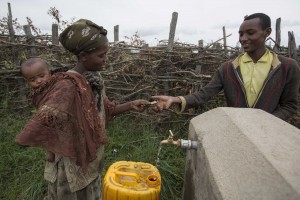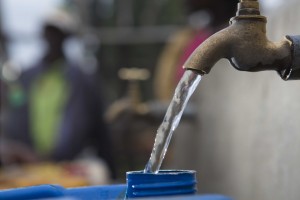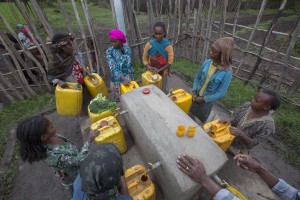 In my economics class I learned that one aspect that defines a good organization is its ability to renew itself, to not get stuck in a rut but to be always looking to improve and change. Even in the area of development this is true. It is important for an organization to be continually evaluating its projects to make sure they are effective, and that they adequately meet the needs of the community. If the projects don’t meet this criteria, than they should be tweaked to be made better.
In my economics class I learned that one aspect that defines a good organization is its ability to renew itself, to not get stuck in a rut but to be always looking to improve and change. Even in the area of development this is true. It is important for an organization to be continually evaluating its projects to make sure they are effective, and that they adequately meet the needs of the community. If the projects don’t meet this criteria, than they should be tweaked to be made better.
An organization that does this very well is Water 1st. I have written a few blogs about Water 1st following its work in various locations including Ethiopia and Honduras. As demonstrated, Water 1st is a very strong partner with CWR bringing clean water to rural communities in a sustainable way; they also bring pride to the community with the knowledge that the water system was built by the community.
 Though Water 1st has found a system of development that is very effective, that doesn’t stop it from continuing to evaluate its work, particularly in Ethiopia. Because of the length of time Water 1st has been in Ethiopia is has had the opportunity to observe the outcomes of previous projects and begin to determine the strengths and weaknesses of its water program. All of Water 1st projects are working and the community members are paying for the water they use. These are significant accomplishments given that most organizations find that 20-30% of their projects no longer function after 3-5 years. However, Water 1st’s goal is not simply to have water projects that work but wants to have projects that significantly improve the lives of the people it impacts.
Though Water 1st has found a system of development that is very effective, that doesn’t stop it from continuing to evaluate its work, particularly in Ethiopia. Because of the length of time Water 1st has been in Ethiopia is has had the opportunity to observe the outcomes of previous projects and begin to determine the strengths and weaknesses of its water program. All of Water 1st projects are working and the community members are paying for the water they use. These are significant accomplishments given that most organizations find that 20-30% of their projects no longer function after 3-5 years. However, Water 1st’s goal is not simply to have water projects that work but wants to have projects that significantly improve the lives of the people it impacts.
 Water 1st believes that for health and hygiene a person should use 20 liters of water per day, for drinking and washing. They have noticed that water use is low in previously built projects- indicating that the community is using the clean water for drinking and not washing. Therefore with their current project, Water 1st and their local partner Water Action have decided to invest extra effort in training the community about the health benefits of staying clean. They plan to be in the region for another 6-10 years, which gives them time to evaluate if this community training improves the health and hygiene of the area.
Water 1st believes that for health and hygiene a person should use 20 liters of water per day, for drinking and washing. They have noticed that water use is low in previously built projects- indicating that the community is using the clean water for drinking and not washing. Therefore with their current project, Water 1st and their local partner Water Action have decided to invest extra effort in training the community about the health benefits of staying clean. They plan to be in the region for another 6-10 years, which gives them time to evaluate if this community training improves the health and hygiene of the area.
Water 1st is committed to improving the health, hygiene, and self-worth of people around the world and CWR is just as committed to helping them with this goal.
–Michyla Lindberg, CWR intern


